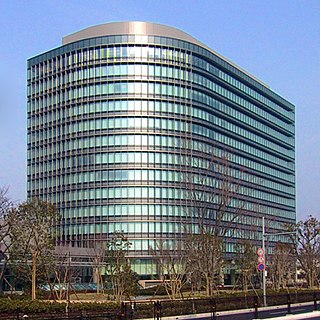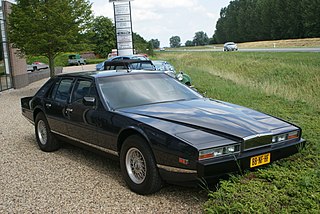This article needs additional citations for verification .(January 2018) (Learn how and when to remove this template message) |
| Lotus M90 | |
|---|---|
| Overview | |
| Manufacturer | Lotus |
| Also called | X100 |
| Production | 1 |
| Model years | 1984 |
| Designer | Oliver Winterbottom |
| Powertrain | |
| Engine | 1.6L 123 bhp (92 kW) 4-cylinder Toyota |
| Transmission | Toyota-built 5-speed |
The Lotus M90 (sometimes referred to as the Lotus X100) is a concept car that was developed by Lotus using many Toyota parts. Rumors were circulated that it was the initial design for the MKI MR2, but, though sharing an engine, it bears very little resemblance to the mid-engine roadster. The project was the last one overseen by Lotus founder Colin Chapman before his death in 1982. [1]

A concept car is a car made to showcase new styling and/or new technology. They are often shown at motor shows to gauge customer reaction to new and radical designs which may or may not be mass-produced. General Motors designer Harley Earl is generally credited with inventing the concept car, and did much to popularize it through its traveling Motorama shows of the 1950s.

Lotus Cars is a British automotive company that manufactures sports cars and racing cars in its headquarters in Hethel, United Kingdom. Lotus cars include the Esprit, Elan, Europa, Elise, Exige and Evora sports cars and it had motor racing success with Team Lotus in Formula One. Lotus Cars are based at the former site of RAF Hethel, a World War II airfield in Norfolk. The company designs and builds race and production automobiles of light weight and fine handling characteristics. It also owns the engineering consultancy firm Lotus Engineering, which has facilities in the United Kingdom, United States, China, and Malaysia.

Toyota Motor Corporation is a Japanese multinational automotive manufacturer headquartered in Toyota City, Aichi, Japan. In 2017, Toyota's corporate structure consisted of 364,445 employees worldwide and, as of September 2018, was the sixth-largest company in the world by revenue. As of 2017, Toyota is the world's second-largest automotive manufacturer. Toyota was the world's first automobile manufacturer to produce more than 10 million vehicles per year which it has done since 2012, when it also reported the production of its 200-millionth vehicle. As of July 2014, Toyota was the largest listed company in Japan by market capitalization and by revenue.
In 1981, Oliver Winterbottom was brought back to Lotus, after a stint developing the Tasmin for TVR, to design a new car to complement the Excel and the Esprit and bring some profitability to the lineup. The new car was to resurrect the Elan name which had not been used since 1975 and, like the Excel, make use of the company's close relationship with Toyota to use already well engineered suspension and engine components. Initial designs were a coupe that didn't get much of an enthusiastic response from the board of the company. The project stalled when company founder Colin Chapman died in 1982, as Lotus found itself in financial trouble. David Wickens of British Car Auctions ended up taking a controlling interest in the company, and the project was started up again, but renamed to the X100 (the Elan later being known as the M100). After redesigning the car to be a convertible the go ahead was given in 1984 to make a single prototype. It was built to a high level of finish, but by that time most of the company's engineers were concentrating on the new front-wheel-drive Elan, and the prototype was warehoused at the company's factory. In 1998 it was auctioned off along with several other rare Lotus cars, and sold to a private collector, and shipped to the United States.
Oliver Winterbottom is a British automotive designer who has designed cars for Lotus as well as for Jaguar and TVR.

The TVR Tasmin is a sports car designed by TVR and built in the United Kingdom by that company from 1980 to 1987. It was the first of TVR's "Wedge"-series which formed the basis of its 1980's model range. The Tasmin/280i was available as a 2-seater coupé, as a 2+2 coupé and as a 2-seater convertible.

The Type 89Lotus Excel is a front-engined, rear-wheel drive sports car designed and built by Lotus from 1982 to 1992. It is based on the design of the earlier Lotus Eclat, which itself was based on the earlier Lotus Type 75 Elite.
The M90 makes use of a front-mounted 1.6L 123 bhp (92 kW) 4-cylinder Toyota engine, as well as a Toyota-built 5-speed transmission. The suspension is also from Toyota, using the same setup as is found in the Excel. The instrument cluster is from an Opel Monza and the radiator is from an Austin Allegro. The tail lights are borrowed from the Aston Martin Lagonda and the turn signal indicators are from the Ford Fiesta. The body is made of fiberglass and the roof is lowered in two pieces. The top is removed separately and fits in the trunk, to create a 'targa' style roof, and the rear portion folds down like a typical convertible.

The Opel Monza is an executive fastback coupe produced by the German automaker Opel from 1978 to 1986. It was marketed in the United Kingdom as the Vauxhall Royale Coupé by Vauxhall.

The Austin Allegro is a small family car that was manufactured by the Austin-Morris division of British Leyland from 1973 until 1982. The same vehicle was built in Italy by Innocenti between 1974 and 1975 and sold as the Innocenti Regent. In total, 642,350 Austin Allegros were produced during its ten-year production life, most of which were sold on the home market.

The Aston Martin Lagonda is a full-sized, luxury four-door saloon which was built by Aston Martin of Newport Pagnell, England, between 1974 and 1990. A total of 645 were produced. The name was derived from the Lagonda marque that Aston Martin had purchased in 1947. There are two distinct generations, the original, short lived 1974 design based on a lengthened Aston Martin V8, and the entirely redesigned, wedge-shaped Series 2 model introduced in 1976, and subsequent evolutions.
This car is featured in a book released in June 2017 by Oliver Winterbottom titled "A Life in Car Design", in which the author provides insight into the design and construction of the M90 along with photographs and related documentation.












